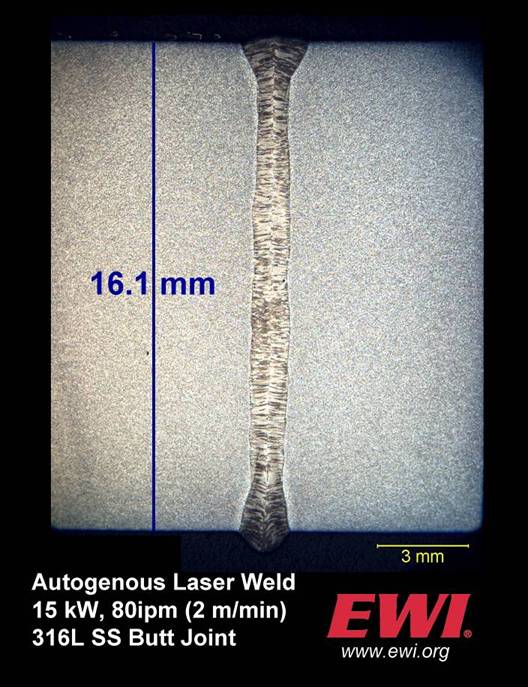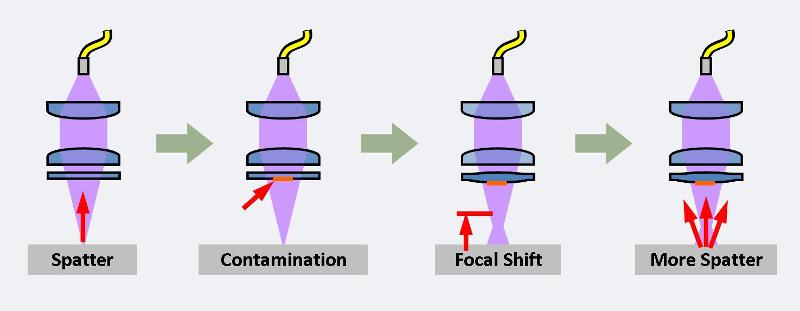
In the last few years, the commercially available power level from fiber and disk lasers has increased faster than at any other time in the history of industrial lasers. Power levels in the 5 kW range are routinely applied for automotive welding applications, and 10 kW to 20 kW lasers are appearing in a variety of energy-related and other industries.
EWI has been fortunate to be on the leading edge of the development of high-power laser welding capabilities, based on this new wave of lasers. More than four years ago, EWI started laser welding trials with a 10 kW, IPG, fiber laser. During that initial work we encountered unforeseen challenges related to welding spatter, porosity, and optics survivability. Since then, we have learned how to manage with these challenges, and today we routinely produce high quality laser welds (Figure 1) with a newer, even more powerful, 15 kW, IPG fiber laser.
While EWI has mastered the basics of this new high-power laser welding, we have continued to encounter robustness issues related to the commercially available focusing optics that are used to deliver a welding focal spot to the work surface. Many others have also observed this deficiency, and laser conferences in the last few years have included scores of papers on the subject. The problem is relatively simple. All of the commercially available laser focusing optics use transmissive optical materials (fused silica, etc.) at one or more locations in their focusing assemblies. These materials are extremely sensitive to contamination in the presence of high laser power. Spatter generated during laser welding is the most obvious contamination concern, but even the so called “invisible contamination” (actually sub-micron metal condensate) can cause dramatic shifts in laser focus location and spot size (Figure 2).
These shifts and changes to the laser focal spot occur over a few seconds or tens of seconds, and they can result in loss of penetration, excessive metal expulsion, and porosity. EWI has fielded a number of inquiries from our member companies who are experiencing these problems, and we have encountered the same situations in our own project work. So, when a recent customer project required that we perform a 13 kW, deep penetration, laser welding operation, lasting nearly two minutes, we knew that a new focusing solution would be required.
Recognizing that the transmissive optics are the primary culprits in this focal shifting problem, EWI set out to eliminate them entirely from the solution. This meant designing a focusing assembly that uses mirrors rather than lenses and windows to achieve the required, stable, focal spot, while still protecting the delicate fiber end that delivers the high-power laser light. The patent-pending solution involves specialty mirrors (produced for EWI by member company II-VI, Inc.) and a flowing gas orifice that prevents ingress of contaminants into the optically sensitive region of the assembly.
The testing of focusing quality from this new optical assembly yielded exceptionally good results, and the welding performance during 132 feet of welding was stable and met the customer’s required, AWS D17.1 Class A specifications. EWI is currently assembling a second version of this high power focusing optic for additional welding tests at even higher laser powers. We believe that this optical solution will enable many high-power, laser welding applications to be developed without fear of an optical “weak link” in the overall system design.
Learn More
Visit the Lasers section of the EWI website. Or contact me at [email protected] or 614.688.5092.

